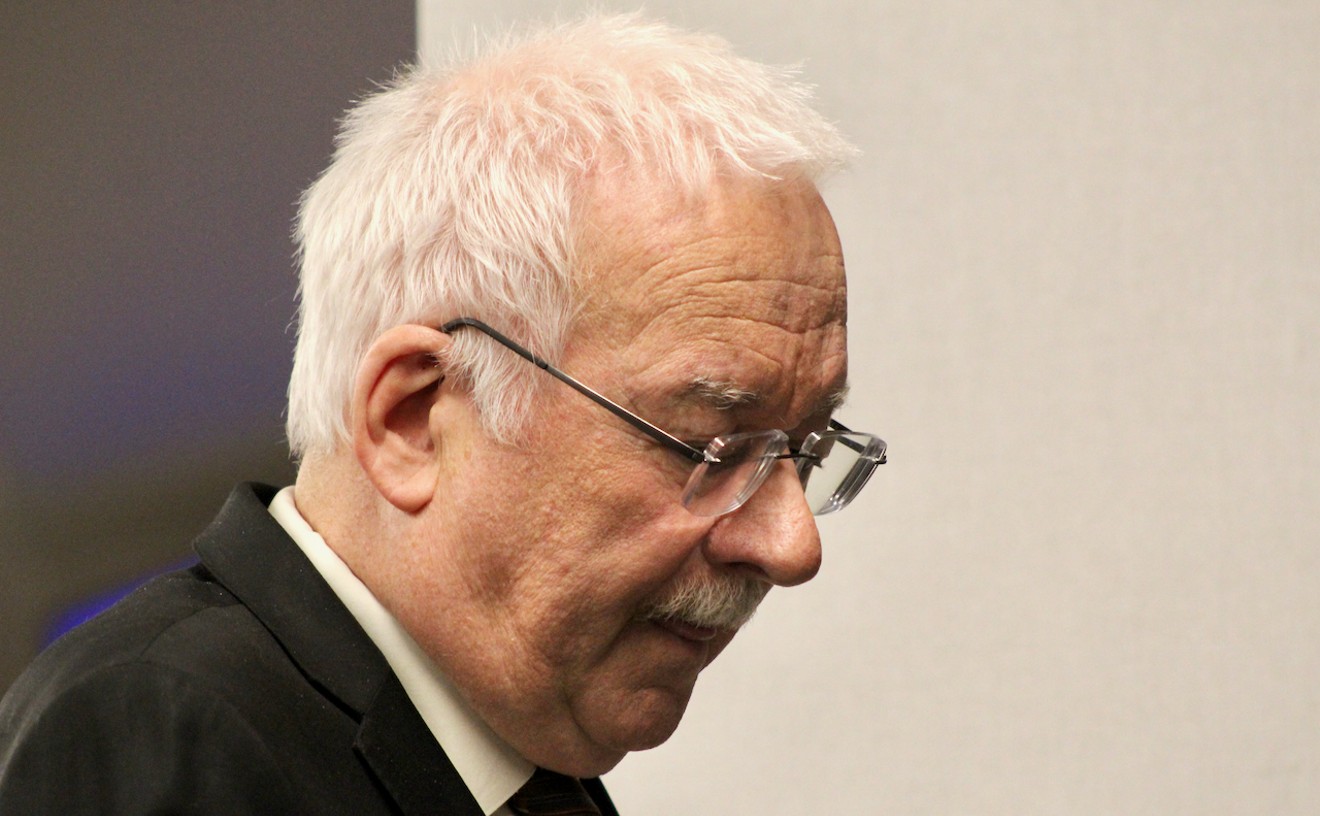Remarkably, Kane never had taken a professional photo before. But at the time, he was one of the hottest magazine art directors around. Kane pondered his assignment, then came up with a wacky idea: He resolved to gather "everybody" in jazz and to take a picture of them.
Jazz in 1958 was in full flower: Saxophonist Charlie Parker--who was to jazz what Pele was to soccer--had died a few years earlier at the age of 35, but his momentous advances were alive and flourishing. The venerable big bands led by Duke Ellington and Count Basie were back in vogue. Jazz greats such as Ella, Bird, Billie and many others needed no surnames.
Their music sounds as fresh today as it did when these people recorded it.
But these days, the only time you can hear a Monk or Ellington song on a Phoenix radio station is in the wee hours, or in between news stories on National Public Radio.
If you were to listen only to KJZZ-FM--a waste of an NPR station whose bosses consider the bleatings of Kenny G to be an advanced art form--you'd be clueless that jazz today is blossoming worldwide. Like those in Kane's photograph, younger musicians such as Joshua Redman, Wynton Marsalis, Christian McBride, Cassandra Wilson and James Carter are creating approachable improvised music in jazz's vital tradition.
End of riff.
Art Kane organized his shoot for 10 a.m. on East 126th Street in Harlem. Nocturnal creatures by trade, many of the invited probably hadn't gotten much sleep. But, somehow, 57 musicians convened in front of an old brownstone as scheduled.
They included players who had embraced a rich range of styles from ragtime to bebop to what was then the avant-garde. Thelonious Monk showed up, in sunglasses, fedora and white sports jacket. Lester Young was there in his famed porkpie hat. Dizzy Gillespie seemed to be having a great time with his friends, and a smiling Count Basie sat with a dozen neighborhood kids on the curb.
Some other Hall of Famers included Charles Mingus, Sonny Rollins, Mary Lou Williams, Coleman Hawkins, Art Blakey and Milt Hinton.
Taken in natural light with a borrowed camera, Kane's photograph appeared in Esquire in late 1958. The two-page spread quickly became the stuff of legend. Fans and the merely curious wondered how in the world Kane had gotten all those greats in one location. Reprints of the photo have appeared in untold books and magazines in the 37 years that have passed since the wonderful moment was frozen in time.
But filmmaker Jean Bach decided not to leave the Kane photo only a delightful piece of jazz and photographic history. In the mid-1980s, Bach started to piece together a documentary based on the mythic photo.
The concept may sound a bit odd, but the result is Bach's joyously entertaining documentary A Great Day in Harlem.
Through narrator and jazz great himself Quincy Jones (who wasn't present for the photo), Bach takes care of the who, what and why of the photo. We learn things such as why Monk wore that white jacket, and why Basie sat on that curb. Such information demystifies as it enlightens, but that's okay.
What makes this documentary sing are the vibrant musical and interpersonal interchanges captured by Bach in archival footage and in recent interviews. (Only 11 of Art Kane's original 57 subjects are still alive, though some--including Gillespie, Art Blakey and others--have died since Bach interviewed them.)
Filmmaker Bach caught a break when bassist Milt Hinton informed her that his wife, Mona, had filmed the Harlem photo session with an 8-millimeter camera. Bach weaves that grainy footage into her narrative, which proves the musicians were much more excited to be visiting with each other than getting their pictures taken by some kid working for Esquire.
But, somehow, like a masterful improvisation around a snaky chord progression, the photo works. So does this documentary. If great jazz is, as someone once wrote, the sound of surprise, A Great Day in Harlem happily makes the grade.










